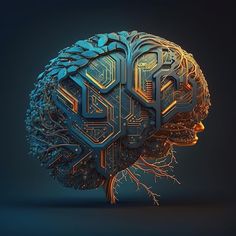Modern Generative AI has evolved into one of the most exciting fields in artificial intelligence, significantly changing how we interact with technology. From personalized content recommendations to advanced customer service bots, generative AI systems are revolutionizing user interactions across industries. But how exactly are these systems improving the way you engage with technology?
In this article, I’ll break down the remarkable impact generative AI has on user interaction, highlighting key improvements, real-world applications, challenges, and what the future holds for this groundbreaking technology.
Pros:
- Enhanced Personalization
- Generative AI can tailor content and responses based on individual user preferences, improving user engagement by delivering highly personalized experiences in real-time.
- Increased Efficiency
- AI-driven interactions, such as chatbots or virtual assistants, can handle routine tasks and queries, allowing users to save time by automating common processes, improving productivity.
- Natural Language Understanding
- Modern generative AI systems, such as GPT models, are capable of understanding and generating human-like language, making interactions feel more conversational and intuitive.
- Real-time Feedback
- Generative AI allows for immediate responses and corrections, especially in areas like customer support or content creation, offering users real-time solutions and feedback.
- Scalable Interaction
- AI systems can handle a large volume of interactions simultaneously, allowing businesses to scale their user engagement efforts without the need for proportional increases in human resources.
Cons:
- Lack of Emotional Intelligence
- While AI has improved in understanding language, it still struggles with recognizing and responding to emotional context, which can result in interactions feeling robotic or impersonal.
- Over-reliance on AI
- Excessive dependence on generative AI for user interaction might reduce human-to-human contact, potentially diminishing the quality of interactions or leading to frustration when AI systems fail to resolve complex issues.
- Data Privacy Concerns
- Generative AI systems often require vast amounts of user data to function effectively. This raises concerns over data privacy, as users may be uncomfortable sharing personal information with AI platforms.
- Limited Creativity
- While generative AI is adept at producing content, it can lack true creativity or deep understanding of nuances, often producing content that feels generic or lacks human touch.
- Bias in AI Models
- Generative AI systems are trained on large datasets, which can include biased information. This may result in AI producing biased responses or reinforcing stereotypes, affecting the fairness and accuracy of interactions.
These pros and cons provide a balanced view of how generative AI is reshaping user interaction, highlighting its transformative potential while also acknowledging the challenges it presents.
You also may like to read this: What Cable Interface Is Best for PIWIS 2 Virtual Machine?
What is Modern Generative AI?
Generative AI refers to systems capable of generating new content—such as text, images, music, and even video—by analyzing and learning from existing data. Unlike traditional AI, which is designed to classify or predict data based on patterns, generative AI creates original outputs, mimicking human-like creativity and reasoning. The key advantage of generative AI lies in its ability to “create” rather than just “analyze” data.
One of the most notable examples is GPT (Generative Pre-trained Transformer) models, which can generate high-quality, contextually relevant text. DALL·E is another example, generating images based on text prompts, opening up entirely new avenues in design and creativity.
Generative AI models leverage vast datasets to recognize patterns and generate responses that are increasingly indistinguishable from human outputs. Let’s explore how these capabilities are reshaping user interaction.
Improving Personalization in User Interaction
Generative AI is improving personalization by dynamically adjusting to user preferences, behaviors, and needs. It’s taking personalization to new heights by crafting responses, recommendations, and content that align more closely with individual user expectations. Personalization has become a key driver of user engagement, whether it’s tailored content, recommendations, or experiences.
Adaptive Content Creation
Generative AI models can personalize content in real-time, analyzing your interactions and tailoring output accordingly. Whether you’re shopping online, reading articles, or interacting with customer support, generative AI systems adapt the content or recommendations to better suit your preferences. E-commerce websites, for instance, use generative AI to recommend products by analyzing your browsing habits, purchase history, and preferences.
Real-Time Data Utilization
Another way generative AI enhances personalization is by leveraging real-time data. This capability is especially important in customer service applications. Generative AI-powered chatbots can instantly process the latest information and respond with relevant, context-specific answers. For example, if you’re asking about a product’s availability, the AI can check stock levels and offer tailored suggestions or alternatives based on your preferences.
AI-Powered Virtual Assistants and Enhanced User Interaction
AI-powered virtual assistants like Siri, Alexa, and Google Assistant have evolved far beyond simple voice command systems. With the advancement of generative AI, these assistants now offer more nuanced interactions, enabling more meaningful, context-aware conversations.
Natural Language Processing (NLP) Advancements
At the core of these systems is Natural Language Processing (NLP), a subfield of AI focused on understanding and generating human language. Modern generative AI models have significantly advanced NLP capabilities, allowing virtual assistants to understand complex commands, follow multi-step requests, and even handle ambiguous queries with greater accuracy.
Context-Aware Interactions
Generative AI enables virtual assistants to respond to more complex and dynamic requests. For instance, instead of just setting a timer when you say “set a reminder,” AI systems can understand the context of your situation. If you say, “Remind me to pick up groceries when I’m near the store,” the assistant can infer your location and time, ensuring the reminder is triggered at the right moment.
The Role of Generative AI in Content Creation and Creativity
Generative AI is transforming the creative industries by enabling machines to generate unique content, such as art, music, and even written works, often indistinguishable from those created by humans.
AI-Generated Art and Design
Generative AI models like DALL·E are revolutionizing the way designers and artists create. By inputting simple descriptions, users can generate high-quality images, ranging from abstract art to highly detailed, photorealistic designs. This significantly reduces the time spent on brainstorming and ideation, giving creatives more room to explore their concepts.
Writing Assistance and Content Generation
Generative AI models, such as GPT-3, are helping content creators generate articles, blogs, and even marketing copy. These systems can quickly draft coherent and contextually relevant content, saving time and boosting productivity. Whether you need a starting point for your writing or complete drafts, generative AI can assist in creating high-quality written material, enhancing both creativity and efficiency.
Generative AI in Customer Support: A Game Changer
Customer support is one area where generative AI has had a profound impact. From answering basic queries to resolving more complex problems, AI-powered systems are providing customers with faster, more personalized experiences.
24/7 Availability
Generative AI chatbots are available around the clock, providing users with instant responses no matter the time of day. Unlike human agents, these AI systems can handle multiple inquiries simultaneously, offering scalability without compromising quality. This constant availability helps businesses provide a better customer experience, regardless of location or time zone.
AI-Driven Problem Solving
Generative AI excels in problem-solving by simulating human-like decision-making processes. These systems can analyze a user’s issue, predict possible solutions, and generate troubleshooting steps that are contextually appropriate. Whether it’s assisting with technical issues or answering product-related questions, AI-powered chatbots are becoming more adept at resolving user concerns efficiently.
Benefits of Generative AI in User Interaction
Generative AI provides several benefits that are enhancing user interaction across a variety of industries:
Efficiency
By automating content creation, customer service, and data analysis, generative AI saves time for both users and businesses. This leads to faster responses, quicker solutions, and a more seamless user experience.
Personalization
Generative AI allows systems to tailor content, services, and experiences to individual users, improving user satisfaction and engagement. Whether through personalized recommendations or custom-tailored content, users are more likely to engage with experiences that speak to their specific needs.
Scalability
Generative AI’s ability to process vast amounts of data and generate outputs at scale makes it incredibly efficient for handling large volumes of interactions. This scalability is a key advantage for businesses looking to provide consistent, high-quality service to a global audience.
Challenges of Generative AI in User Interaction
While the benefits are undeniable, there are challenges associated with generative AI that need to be addressed:
Ethical Concerns
As generative AI systems become more advanced, there are growing concerns about the potential misuse of AI-generated content. Issues like misinformation, deepfakes, and content manipulation are rising risks. Ensuring ethical AI development is crucial in minimizing these risks.
Bias and Fairness
Generative AI systems are trained on large datasets, which can include biased data. If not properly managed, these biases can affect the outputs generated by the AI, leading to fairness and equality issues in user interactions.
Data Privacy
Generative AI often relies on vast amounts of user data to generate accurate and personalized responses. Ensuring that user data is handled securely and in compliance with privacy regulations is essential to protect user trust.
Future of Generative AI in User Interaction
The future of generative AI is exciting, with advancements likely to continue pushing the boundaries of what is possible in user interaction. As AI systems become even more sophisticated, we will see even more personalized, creative, and intuitive experiences.
Comparison Table: Key Features of Generative AI in User Interaction
| Feature | Personalization | Efficiency | Creativity | 24/7 Availability |
| Description | Tailors user experiences based on preferences. | Automates tasks, reducing time spent on manual work. | Enables AI-generated content like art and writing. | Provides round-the-clock customer support. |
| Pros | Increases user satisfaction and engagement. | Saves time and boosts productivity. | Fosters innovation and creative output. | Ensures constant user support. |
| Cons | Raises concerns about data privacy. | Risk of over-reliance on automation. | May lack true human creativity. | May struggle with complex or emotional interactions. |
| Real-World Use Case | E-commerce product recommendations. | AI-powered chatbots in customer support. | AI-generated art for design projects. | AI-driven customer support systems. |


















